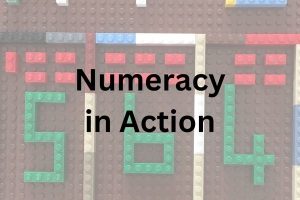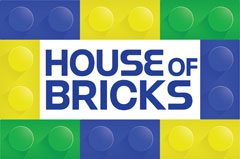Introduction:
In today’s educational landscape, educators and parents are constantly seeking innovative ways to make learning enjoyable and effective. One such method that has gained immense popularity is using LEGO® bricks to support intentional learning moments. With its vibrant colours and endless possibilities, they offer an exciting approach to teaching mathematical concepts to children. This article delves into the myriad of benefits of incorporating bricks into numeracy education, exploring how these simple plastic blocks can unlock a child’s mathematical potential while promoting and strengthening a range of values and key competencies.
Using Bricks to Support Learning with a Focus on Numeracy
Bricks are far more than just toys; they are powerful educational tools that can transform the learning experience. They offer a versatile and enjoyable platform to enhance children’s numeracy learning in various ways. Here’s how we believe using bricks can support learning with a focus on numeracy:
1. Building a Strong Foundation for Mathematical Concepts
The foundation of a child’s mathematical journey is crucial for their overall understanding and confidence in the subject. Bricks provide a hands-on approach that allows children to visualize abstract concepts. Through building structures, patterns, and shapes, children can grasp fundamental mathematical principles in a tangible and enjoyable manner.
2. Enhancing Problem-Solving Skills
Mathematics is all about problem-solving, and bricks are perfect for nurturing this skill. As children construct intricate designs, they encounter challenges and learn to troubleshoot on their own. This fosters resilience, critical thinking, and perseverance. All essential attributes for tackling mathematical problems.
3. Practicing Basic Arithmetic
Learning addition, subtraction, multiplication, and division can be monotonous for young learners. Introducing bricks into the equation adds a fun twist. Learners can use the bricks as counters, making calculations visually stimulating and enjoyable. Each brick has studs on the top, which provides an ideal tool for teaching counting and number recognition. furthermore, encourage children to find pieces with specific numbers of studs, create towers of a certain height, and count the bricks used in their constructions. Such activities foster a strong foundation in numerical concepts. Also, this practical application helps solidify their understanding of basic arithmetic operations.
4. Exploring Fractions and Proportions
Fractions and proportions can be tricky concepts for children to grasp. By dividing bricks into different segments, children can see how a whole can be broken down into parts. Bricks can be easily stacked so taking a large brick and covering it with smaller pieces will allow visualisation of these concepts and make fractions come to life, making it easier for learners to comprehend this challenging topic.
5. Teaching Geometry Through Play
Geometry is often considered an abstract concept, but bricks make it concrete and relatable. As children build their creations, they encounter various shapes in their bricks. By recognizing and using different shapes, children can explore the mathematical aspect of geometry. They can learn how shapes mathematically affect the appearance of their builds, just like the creators in the show LEGO® Masters. By constructing shapes and structures, children learn about angles, symmetry, and spatial relationships, turning geometry into an engaging hands-on experience.
6. Introducing Measurement and Data Analysis
Measuring and comparing objects is an essential aspect of numeracy. LEGO bricks can be utilized as units of measurement, allowing children to explore length, width, and height while collecting data and creating graphs. They can compare small, medium, and large bricks, arranging them to understand the differences in size practically. This interactive approach makes learning data analysis an exciting adventure.
7. Catering to Different Learning Styles
Not all children learn in the same way, and LEGO® bricks can accommodate specific learning styles. Especially for children who are visual, physical, social, solo, or logical learners, these blocks offer a versatile platform to engage with mathematical concepts effectively. The bricks can be engaged to appeal to aural, verbal, and natural learners with some creativity in the presentation of the activity. This is discussed in depth in our Sensory Exploration Part 2 workshop (part of the Creative Pedagogy workshop series offered by House of Bricks).
8. Integrating Technology for Advanced Learning
LEGO has embraced technology with its innovative LEGO® Education SPIKE® Prime sets, allowing children to program their creations. By introducing coding and robotics into numeracy education, children develop computational thinking skills while reinforcing mathematical concepts.
9. Promoting Creativity and Collaboration
Beyond its mathematical benefits, using LEGO bricks supports learning by nurturing creativity and imagination. As children build and design, they express their ideas freely, enhancing their cognitive abilities and paving the way for innovative thinking in other areas of their lives. Working together on LEGO projects fosters teamwork and communication among children. When solving mathematical challenges collectively, they learn from one another, share ideas, and grow as learners. This collaborative environment enhances their social skills and makes learning an enjoyable group experience.
Conclusion:
Using bricks to intentionally support learning opens a world of possibilities for children’s education. These colourful, versatile blocks are more than just playthings; they are powerful tools that facilitate a deeper understanding of mathematical concepts while sparking creativity and problem-solving skills. From basic arithmetic to complex geometry, bricks make learning math an enjoyable adventure for children of all ages and learning styles.
So, whether you’re a parent or an educator, consider incorporating bricks into your numeracy curriculum. Watch as children’s faces light up with excitement and curiosity as they explore the world of math through the lens of these iconic building blocks.
Frequently Asked Questions (FAQs)
FAQ 1: How can bricks enhance numeracy learning?
They offer a hands-on approach, allowing children to visualize abstract mathematical concepts through building structures, patterns, and shapes. This interactive experience cements a strong foundation for understanding numeracy
FAQ 2: What skills can children develop by using bricks for numeracy?
By using bricks for numeracy, children can enhance their problem-solving skills, critical thinking, arithmetic abilities, and gain a better grasp of fractions, proportions, geometry, and data analysis.
FAQ 3: How do bricks support collaborative learning?
When children work together on projects, they learn teamwork, communication, and the value of sharing ideas. Collaborative learning with bricks fosters a positive and engaging environment for developing numeracy skills.
FAQ 4: Can bricks accommodate different learning styles?
Yes, this creative resource caters to various learning styles, making them suitable for visual, physical, social, solo, or logical learners. The versatility of bricks allows children to engage with mathematical concepts in ways that resonate with their unique learning preferences.
FAQ 5: What role does technology play in LEGO®-based numeracy learning?
LEGO® Education SPIKE® Prime sets integrate technology by allowing children to program their creations. By introducing coding and robotics into numeracy education, children develop computational thinking skills while reinforcing mathematical concepts.
FAQ 6: Apart from numeracy, what other benefits do LEGO bricks offer?
Besides supporting numeracy learning, LEGO® bricks promote creativity, collaboration, and cognitive development. Children express their ideas freely as they build, fostering innovation in various aspects of their lives.

Creative Pedagogy Workshops – READ MORE HERE. Professional development and learning workshop series. Developed for educators. And presented by Rachel de Vries of House of Bricks with Vida Schurr.

